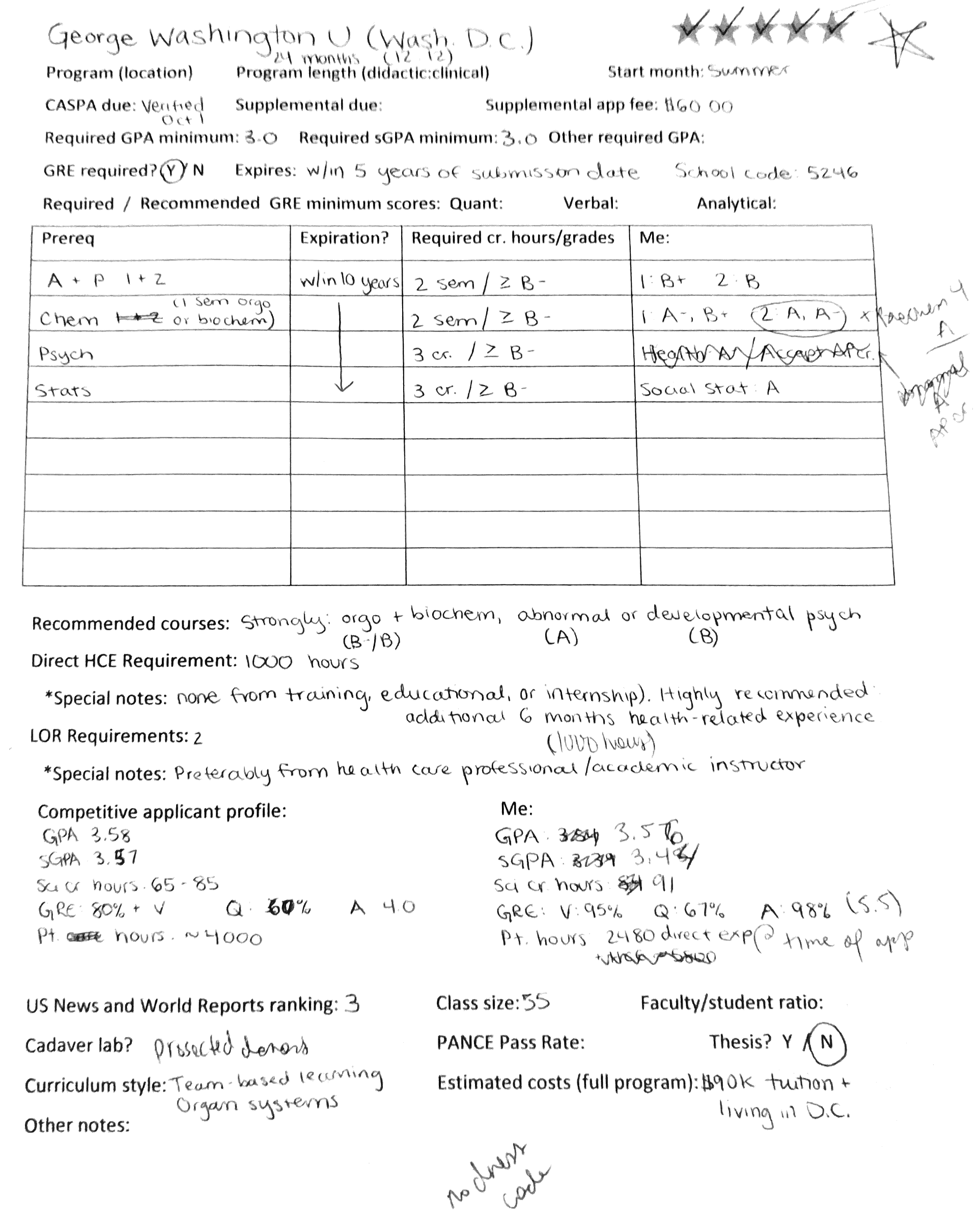After a disastrous first application cycle, I started researching the best strategies for applying to PA school. After combing the internet and encountering a multitude of different opinions, here’s what worked for me!
August-October
*Researched how to write an effective personal statement and began drafting mine. I knew I wanted an early start (as opposed to writing it start to finish in 72 hours like I did the first time). While this may have been too early (I revised it to death), it helped me avoid the stress of a time crunch.
*Calculated my GPAs and hours in each category. I accidentally miscalculated my science GPA and had a nasty surprise when it was CASPA verified at 0.10 lower than I thought! However, these calculations were crucial as I compared myself to not only the minimum requirements for each program, but their accepted student averages.
*Began identifying programs I’d like to attend. I started with every school in the US and eventually narrowed it down to 16 programs using these strategies.
November
*Drafted my experience descriptions. During my first application cycle, I only included PCE and HCE experiences and copied my resume bullet points as the descriptions. We know how that worked out! This time, I included everything I’d done since college and was careful to use every character of the experience space to share not only my responsibilities, but also highlight one or two things I learned from each experience.
December
*Asked three references for letters. References were the most nerve-wracking portion of my application because I’m shy! This time, I made sure to identify references early and be persistent in asking for letters.
February
*My 2nd and 3rd references confirmed they would write me letters. It’s was a nail-biting few months in between, but they came through for me BIG time.
March
*Continued refining my personal statement and experience descriptions.
*Continued refining my school list.
April 20-27
*Checked my account login information for each of my college transcript portals and the ETS site (for GREs).
April 27 – CASPA opens!
*Filled in the demographics, entered my grades, sent my transcripts, and submitted recommendation requests to my references.
*Copied and pasted my experience descriptions and personal statement into CASPA. The whole process took maybe 4 hours! There’s a popular misconception that CASPA is a behemoth – if you chip away in advance, it really isn’t so bad!
*Began working on supplementals. I added all my programs in CASPA and checked out their extra requirements (PCE documentation, supplemental essays, etc.) so I could get a head start on them while I waited on my references, GRE scores, and transcripts.
May 22
*2 references submitted.
*Submitted my application for verification. Did you know that CASPA will verify your application with 2 letters of rec? I immediately submitted to one school that didn’t require any supplementals and my whole application was verified 6 hours later. This way, all my subsequent programs saw my verified application as soon as I hit submit! (If I’d waited to submit all my applications at once, I’d have submitted weeks later and potentially waited in a long verification queue.)
June 1
*My third letter was submitted! I was on hold at some schools pending my third letter, so this was a huge relief.
*Continued working on supplementals and submitted my last two applications on June 8.
June 27
*First interview invite! I had my flight confirmation within 1/2 an hour of receiving the invitation.
July 21:
*First acceptance. I got the call less than an hour after leaving the interview and was so excited I don’t know how I kept my car on the road. Every struggle, early morning, and late night melted away as I realized I was going to be a PA.

